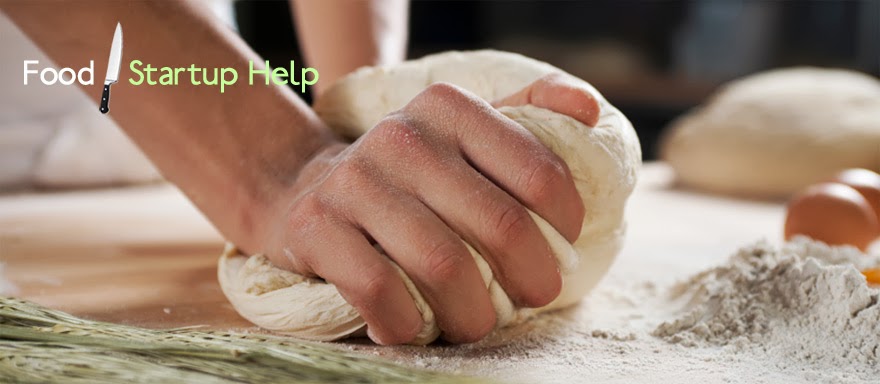Interview with Lev Berlin
Creator of ReciPal
Kathryn: Hi Lev! Like a lot
of the folks we talk to, you have an interesting background with some twists
and turns. How did you end up coming up with ReciPal?
Lev: For quite a while I was
working as a management consultant here in New York, flying around helping
banks solve problems and building fun analytics tools for them. I always had a
bit of an entrepreneurial bent, so while consulting I got involved with my
friends at SlantShack Jerky making beef jerky for fun. It kept
growing and eventually we realized we needed to put nutrition facts on our
labels. I ended up researching the process but couldn’t find any good solutions
out there – we had 60 combinations of flavors, so pretty much everything was way
too expensive. Being a nerd, I ended up finding the USDA ingredient database,
building a fancy spreadsheet, and doing the nutrition analysis myself. Around
the same time I was getting into programming websites. The light bulb went off
in my head one night and I got to work building ReciPal to help food startups create nutrition labels.
Kathryn: So I imagine it’s
come quite a way since the early days?
Lev: Ummm…yes. It was really
basic initially. You couldn’t sign in and you couldn’t save a recipe. It was
hardly even practical for my own purposes, but I was learning and having fun.
Over time we added features, made it easier to use and eventually got it to the
point where customers were willing to pay for it (and we felt comfortable
charging).
Kathryn: What was missing
from the other options available?
Lev: Well, the first thing
most people think of when they need nutrition analysis is sending their product
to a lab. Unfortunately, that is fairly expensive ($300-500) and also takes
some time to send your product, perform the tests, and get everything back. We
use a database analysis and even the database analysis websites I found were
$150+ per label. There are some free options, but they are unfortunately what
you’d expect from something free. I wanted to take the simplicity of database
analysis and make it easy to use, reasonably priced, and highly customizable.
Kathryn: So who is the
prototypical customer at ReciPal?
Lev: I wanted there to be a
great resource for food startups to get nutrition labeling done because I spent
far too much time on the process myself. So I definitely focused on early stage
food startups and bakers. At this point we have all kinds of customers, from
nutritionists, to co-packers, to food business consultants, to food startups
themselves. We also offer a few complimentary labels to each user so that
startups with just a few products don’t have to pay much, if anything at all. I’m
cheap, so I would have loved that.
Kathryn: Is it just
nutrition labeling, or are there other reasons food startups could use ReciPal?
Lev: By default, it ends up
being a nice cloud-based recipe and ingredient manager. So, you can’t ever lose
your recipes or forget the ratios. We’ve built in lots of quick tools like
scaling a recipe to any size and turning a recipe into an ingredient so it can
be used as a sub recipe. There’s also a simple but effective recipe costing
feature that some of our users can’t live without – it really helps early
entrepreneurs figure out how to price their products, which is easier said than
done. We also handle ingredient lists. And there’s always more in the works!
Kathryn: Anything food
startups should know about labeling that they may not already know?
Lev: Once you have a product
you should really get nutrition facts on your packaging, even if you’re not so big
that it’s required. It helps build a rapport with customers, will accelerate
your entry into retail, and just feels honest. The other thing is that even
though ReciPal was created to avoid expensive
lab analysis, really big food companies usually use database analysis. It’s
much faster, often more accurate, and it allows them to quickly iterate the
recipe process with an eye for the nutritional aspect of the product, which is
important for so many food companies that are focused on organic, healthy
products.
Kathryn: Any tips for food
startups from your days at SlantShack?
Lev: We got our start doing
farm markets in New York City, so I highly recommend signing up for one in your
area. They can generate a lot of buzz, they’re fun, and you can really engage
with your customers while selling your product. We learned a ton just by
talking to customers at markets. We got to see what flavors they liked and
didn’t like, received immediate feedback on packaging, and learned their
shopping behaviors (where, when, why they shop). All that helps you iterate on
your product and marketing faster than you otherwise could selling online or in
stores. Think of markets as a really cheap focus group where you can test
something new every week.
Our other biggest not-so-secret sauce is having fun, so
don’t forget that!





